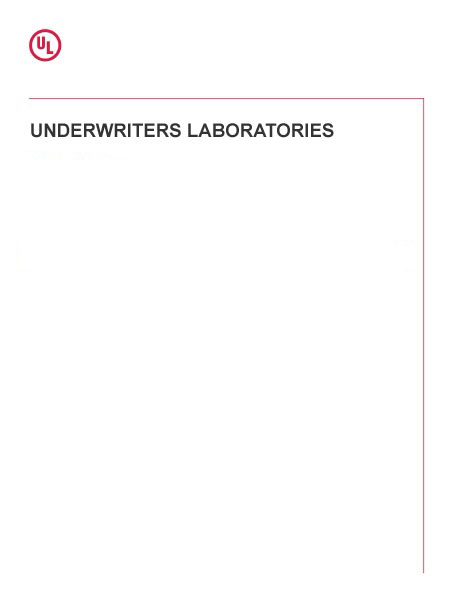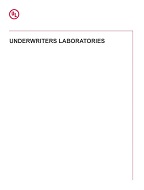Click here to purchase
Please note: All interim revisions for this edition available at time of your purchase will be included.
Hospital Signaling and Nurse Call Equipment
UL 1069
1 Scope
1.1 These requirements cover the individual units employed to form a hospital nurse call system (NCS) intended to provide audible and visual communication between patients and hospital personnel. They also cover miscellaneous signaling equipment employed in hospitals. Some examples include bedside tables, annunciators, power supplies for nurse call systems, and gas monitoring units.
1.2 An NCS minimally employs fundamental devices that perform these fundamental operations as follows:
a) Notification – Call annunciation at a primary nurse’s station (audible and visual on a wired device – signal and power),
b) Notification – Call annunciation at the dome light,
c) Notification – Call-placed indicator on the patient station (visual),
d) Notification – Zone annunciation (audible and visual), and
e) Call reset/cancellation.
1.2 added October 12, 2007
1.3 An NCS may employ a wireless interface for:
a) Notification by redundant call annunciation device at a portable nurse’s station.
b) Initiation of a patient or staff call.
1.3 added October 12, 2007
1.4 The units covered by these requirements are intended to be installed in either general or critical care areas in accordance with the National Electrical Code, NFPA 70, and the Standard for Health Care Facilities, NFPA 99.
1.5 These requirements do not cover medical and dental equipment, line isolation monitors, X-ray equipment, electrically heated pads, therapeutic lamps, refrigerated oxygen therapy equipment, food warming cabinets and carts, equipment employed in inhalation anesthetizing or hazardous locations, office intercoms, or similar equipment and products covered by individual requirements. These requirements do not cover equipment employed in an area of hyperbaric oxygenation, in which a patient is exposed during oxygen therapy to pressures greater than ambient atmosphere.
1.6 A product that contains features, characteristics, components, materials, or systems new or different from those covered by the requirements in this standard, and that involves a risk of fire or of electric shock or injury to persons shall be evaluated using appropriate additional component and end-product requirements to maintain the level of safety as originally anticipated by the intent of this standard. A product whose features, characteristics, components, materials, or systems conflict with specific requirements or provisions of this standard does not comply with this standard. Revision of requirements shall be proposed and adopted in conformance with the methods employed for development, revision, and implementation of this standard.
Product Details
- Edition:
- 7th
- Published:
- 10/12/2007
- Number of Pages:
- 104


